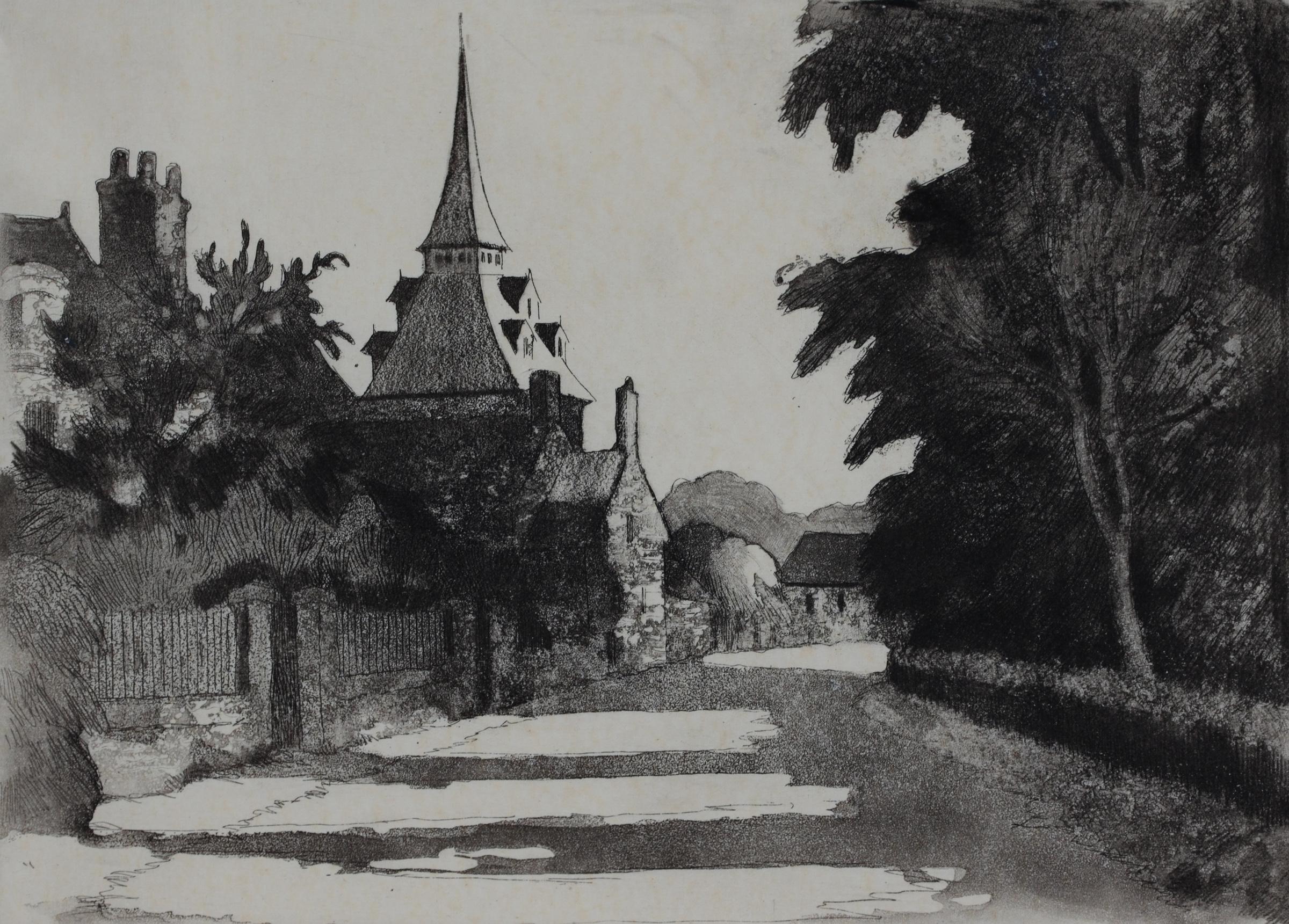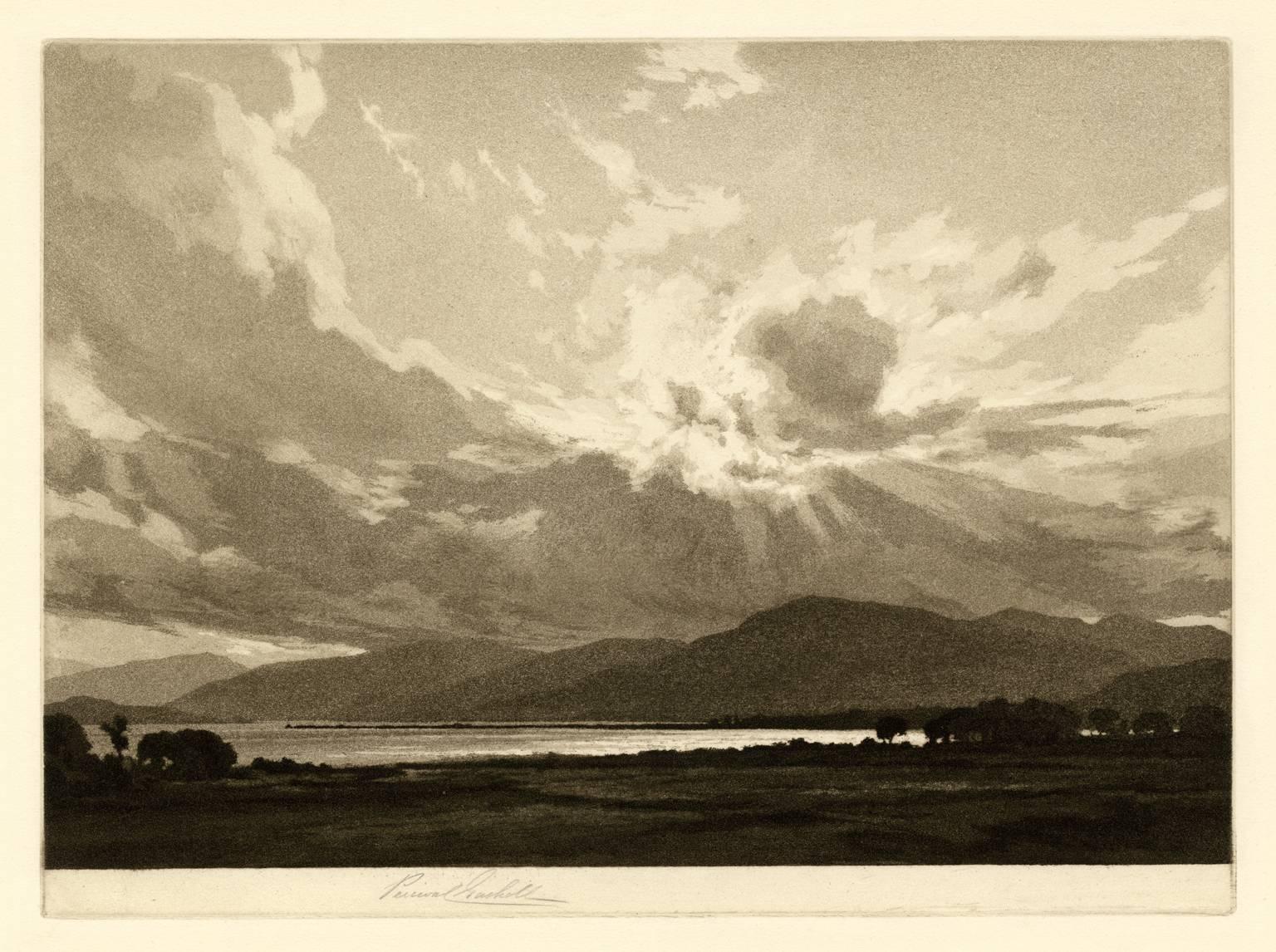Items Similar to Saint Tropez
Want more images or videos?
Request additional images or videos from the seller
1 of 8
André Dunoyer de SegonzacSaint Tropez1964
1964
About the Item
Saint Tropez
Etching with aquatint, printed in colors, 1964
Signed in ink and numbered in pencil
Edition: 71/100
Issued for the album St. Tropez et la Provence, in 1966
Reference: Loire and Cailler 1577
Image: 11 3/8 x 9 1/4"
Plate: 11 5/8 x 9 3/8"
Condition: Excellent
Brilliant impression with fresh, vivacious colors, from the only edition of 100 signed and numbered proofs.
- Creator:André Dunoyer de Segonzac (1884-1974, French)
- Creation Year:1964
- Dimensions:Height: 11.375 in (28.9 cm)Width: 9.25 in (23.5 cm)
- Medium:
- Movement & Style:
- Period:
- Condition:
- Gallery Location:Fairlawn, OH
- Reference Number:
About the Seller
5.0
Recognized Seller
These prestigious sellers are industry leaders and represent the highest echelon for item quality and design.
Platinum Seller
These expertly vetted sellers are 1stDibs' most experienced sellers and are rated highest by our customers.
Established in 1978
1stDibs seller since 2013
711 sales on 1stDibs
Typical response time: 1 hour
Associations
International Fine Print Dealers Association
- ShippingRetrieving quote...Ships From: Fairlawn, OH
- Return PolicyA return for this item may be initiated within 10 days of delivery.
More From This SellerView All
- Arch of the Pont Neuf, ParisBy Sir Frank BrangwynLocated in Fairlawn, OHArch of the Pont Neuf, Paris Etching on heavy wove paper, 1923 Signed in pencil lower right (see photo) From: Brangwyn Portfolio (12 original etchings and thr...Category
1920s Post-Impressionist Landscape Prints
MaterialsEtching
- BougivalBy Maurice de VlaminckLocated in Fairlawn, OHBougival Woodcut, 1914 Signed and numbered in pencil Edition 30, this numberd 22 Printed on laid Van Gelder Zonen paper Published by Henri Kanweiler, Paris Printed by Paul Birault, Paris Bougival is located west of Paris, on the left bank of the River Seine. This woodcut was inspired by Vlaminck's 1905 Fauvist masterpiece of the same title in the collection of the Detroit Institute of Art. An impression of this image is in the Yale Univeristy Art Gallery, Condition: Very slight sun staining, otherrwise very good Image/block size: 13 1/4 x 16 1/4 inches Sheet size: 19 1/8 x 22 1/8 inches Reference: Walterskirchen 11b Maurice de Vlaminck (4 April 1876 – 11 October 1958) was a French painter. Along with André Derain and Henri Matisse, he is considered one of the principal figures in the Fauve movement, a group of modern artists who from 1904 to 1908 were united in their use of intense colour.] Vlaminck was one of the Fauves at the controversial Salon d'Automne exhibition of 1905. Life Maurice de Vlaminck was born on Rue Pierre Lescot in Paris. His father Edmond Julien was Flemish and taught violin and his mother Joséphine Caroline Grillet came from Lorraine and taught piano His father taught him to play the violin.[3] He began painting in his late teens. In 1893, he studied with a painter named Henri Rigalon on the Île de Chatou In 1894 he married Suzanne Berly. The turning point in his life was a chance meeting on the train to Paris towards the end of his stint in the army. Vlaminck, then 23 and already active in anarchist circles in Paris, met an aspiring artist, André Derain, with whom he struck up a lifelong friendship.] When Vlaminck completed his army service in 1900, the two rented a studio together, the Maison Levanneur, which now houses the Cneai,[6] for a year before Derain left to do his own military service. In 1902 and 1903 he wrote several mildly pornographic novels illustrated by Derain. He painted during the day and earned his livelihood by giving violin lessons and performing with musical bands at night. Vlaminck participated in the controversial 1905 Salon d'Automne exhibition. After viewing the boldly colored canvases of Vlaminck, Henri Matisse, André Derain, Albert Marquet, Kees van Dongen, Charles Camoin, and Jean Puy, the art critic Louis Vauxcelles disparaged the painters as "fauves" (wild beasts), thus giving their movement the name by which it became known, Fauvism. In 1911, Vlaminck traveled to London and painted by the Thames. In 1913, he painted again with Derain in Marseille and Martigues. In World War I he was stationed in Paris, and began writing poetry. Eventually he settled in Rueil-la-Gadelière, a small village south-west of Paris. He married his second wife, Berthe Combes, with whom he had two daughters. From 1925 he traveled throughout France, but continued to paint primarily along the Seine, near Paris. Resentful that Fauvism had been overtaken by Cubism as an art movement Vlaminck blamed Picasso "for dragging French painting into a wretched dead end and state of confusion". During the Second World War, Vlaminck visited Germany and on his return published a tirade against Picasso and Cubism in the periodical Comoedia in June 1942. Vlaminck wrote many autobiographies. Vlaminck died in Rueil-la-Gadelière on 11 October 1958. Artistic career Two of Vlaminck's groundbreaking paintings, Sur le zinc (At the Bar) and L'homme a la pipe (Man Smoking a Pipe) were painted in 1900. For the next few years Vlaminck lived in or near Chatou (the inspiration for his painting houses at Chatou), painting and exhibiting alongside Derain, Matisse, and other Fauvist painters. At this time his exuberant paint application and vibrant use of colour displayed the influence of Vincent van Gogh. Sur le zinc called to mind the work of Toulouse-Lautrec and his portrayals of prostitutes and solitary drinkers, but does not attempt to probe the sitter's psychology—a break with the century-old European tradition of individualized portraiture. According to art critic Souren Melikian, it is "the impersonal cartoon of a type. In his landscape paintings, his approach was similar. He ignored the details, with the landscape becoming a vehicle through which he could express mood through violent colour and brushwork. An example is Sous bois, painted in 1904. The following year, he began to experiment with "deconstruction," turning the physical world into dabs and streaks of colour that convey a sense of motion. His paintings Le Pont de Chatou (The Chatou Bridge), Les Ramasseurs de pommes de terre (The Potato Pickers...Category
1910s Fauvist Landscape Prints
MaterialsWoodcut
- Saint-Tropez-Le PortBy Paul SignacLocated in Fairlawn, OHSaint-Tropez-Le Port Color lithograph, 1897-1898 Signed in pencil lower right (see photo) Numbered in pencil lower right: No. 68 (see photo) From: Album des Peintres-Gravures, 1898 Published by Ambrose Vollard, Paris Printer: Auguste Clot, Paris Edition: 100 Numbered: No. 68 Reference: Una Johnson, Vollard, No. 188, reproduced pale 35 Kornfeld & Wick, No. 19 b/b Condition: Very fresh colors One tiny spot in the upper margin above the image (see photo) Image size: 17 1/8 x 13 inches Frame size: 32 3/4 x 27 1/4 inches Archival framing by Galerie Maximilian, Aspen, CO Museum glass 22K Gold leaf hand carved frame...Category
1890s Post-Impressionist Landscape Prints
MaterialsLithograph
- L’Angelus (The Bell Tower)By Félix Hilaire BuhotLocated in Fairlawn, OHL’Angelus (The Bell Tower) etching & drypoint, c. 1876 Signed in the plate with the artist's initials (see photo) Condition: Excellent Image/Plate size: 5 7/8 x 4 1/4 inches Sheet s...Category
1870s French School Landscape Prints
MaterialsEtching
- Barges, DordrechtBy James Abbott McNeill WhistlerLocated in Fairlawn, OHBarges, Dordrecht Etching, c. 1886 Signed in the plate with the butterfly Edition: One of 10 known impressions of this image. VERY RARE Provenance: Frederick Keppel & Co. with their ...Category
19th Century Impressionist Landscape Prints
MaterialsEtching
- Scene II, Le Nozze Degli DeiBy Stefano Della BellaLocated in Fairlawn, OHScene II, Le Nozze Degli Dei Etching, 1637 Signed in the plate lower left The scene depicts the initial moment when Diana is revealed, surrounded by her nymphs, celebrating a success...Category
1630s Old Masters Landscape Prints
MaterialsEtching
You May Also Like
- Le Village de Landel by Paulémile Pissarro - etchingLocated in London, GBSOLD UNFRAMED Le Village de Landel by Paulémile Pissarro (1884 - 1972) Etching 17.2 x 23.7 cm (6 ¾ x 9 ⅜ inches) Signed lower right, Paulémile-Pissarro and numbered lower left, 2e e...Category
20th Century Post-Impressionist Landscape Prints
MaterialsEtching
- Les Deux ChaumieresBy Jean-Emile LaboureurLocated in New York, NYJean-Emile Laboureur (1877-1943), Les Deux Chaumieres, 1927-28, etching and engraving, signed in pencil lower left and numbered lower right. Laboureur 356, second state (of 4). One o...Category
1920s Post-Impressionist Landscape Prints
MaterialsEngraving, Etching
- "When Day is Done, " an Original Etching signed by John Edward CostiganBy John Edward CostiganLocated in Milwaukee, WI"When Day is Done" is an original etching and aquatint signed lower right in pencil by the artist John Edward Costigan. It depicts a man and a woman with their young child at the end...Category
1930s Post-Impressionist Figurative Prints
MaterialsEtching, Aquatint
- London Tower Bridge Viewed from the Thames - Original etching - 1910By Paul-Adrien BourouxLocated in Paris, FRPaul-Adrien BOUROUX London Tower Bridge Viewed from the Thames Original etching with aquatint Printed signature in the plate On Japan paper 28 x 19 cm (c. 11 x 8 inch) Excellent co...Category
1910s Post-Impressionist Landscape Prints
MaterialsEtching, Aquatint
- Sunset - ArdgourBy Percival GaskellLocated in Myrtle Beach, SCPercival Gaskell, 'Sunset - Ardgour", aquatint, edition not stated, c. 1920. A superb, atmospheric impression, in brown/black ink, on cream wove paper; the full sheet with margins (2 to 3 inches), in excellent condition. Signed, titled, and numbered '2' in pencil. Matted to museum standards, unframed. Ardgour is a district of Lochaber on Ardnamurchan peninsula on the western shore of Loch Linnhe...Category
1920s Post-Impressionist Landscape Prints
MaterialsAquatint
- Village - Etching by M. de Vlaminck - 1950By Maurice de VlaminckLocated in Roma, ITVillage is a modern artwork realized by Maurice de Vlaminck in 1950. Black and white etching. Hand signed and dated on the lower margin. Edition of 100 specimen as reported on th...Category
1950s Post-Impressionist Landscape Prints
MaterialsEtching



